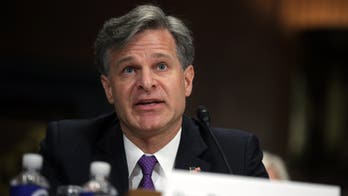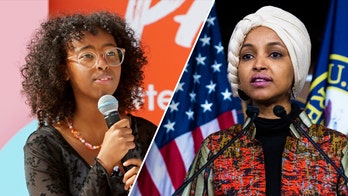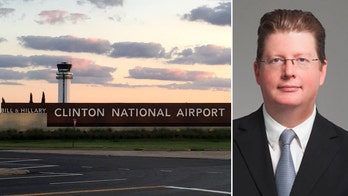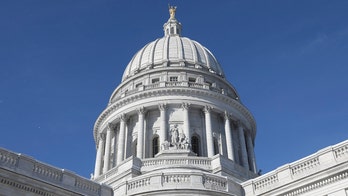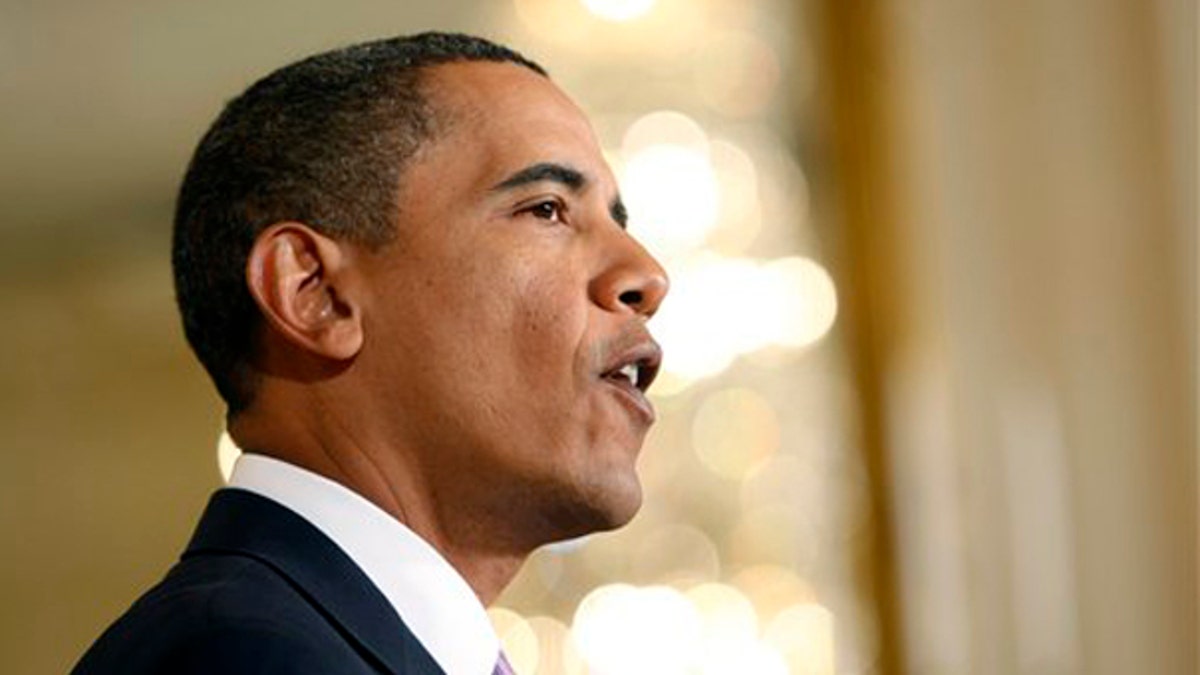
President Obama speaks about the economy, Friday, Jan. 8, 2010, in the East Room of the White House in Washington. (AP)
President Obama announced Friday that he'll create jobs of the future by building a "robust clean energy sector" following news that the unemployment rate remained stuck at 10 percent in December.
Figures released Friday showed that employers shed a more-than-expected 85,000 jobs last month as hundreds of thousands of people stopped looking for work altogether, reversing the slight gains from the month before.
Obama said the government would provide more than $2 billion in tax credits already approved by Congress to add some 17,000 green jobs for 183 projects to develop solar and wind power and energy management technologies.
The funding is part of the $787 billion economic stimulus package Congress approved early last year.
Obama said the unemployment rate is "still pointing in the right direction" despite job losses, which he said were one-tenth of the losses at the start of the year.
"Last month, however, we slipped back, losing more jobs than we gained," he said.
The rate would have been higher if more people had been looking for work instead of leaving the labor force because they can't find jobs.
The White House said the numbers nevertheless demonstrate that the rate at which jobs are disappearing has slowed, given that employment fell by 139,000 in September and 127,000 in October. Christina Romer, chairwoman of the Council of Economic Advisers, wrote on the White House blog that the recovery will "not be a straight line." But she said 10-percent unemployment is unacceptable.
"The unemployment rate remains unacceptably high, which underscores the need for responsible actions to jump-start private-sector job creation," she wrote. "It is essential that we continue our efforts to move in the right direction and replace job losses with robust job gains."
President Obama plans to announce Friday steps he's taking to combat unemployment, including using $2.3 billion in tax credits from the $787 billion economic stimulus package toward the goal of creating tens of thousands of green jobs. Obama also was expected to call upon Congress for an additional $5 billion in spending for clean energy manufacturing, an idea first proposed by Vice President Joe Biden last month.
"We are in a very tough economic environment," White House Press Secretary Robert Gibbs said.
Republicans said the persistently high unemployment is a sign that the economic stimulus package has not delivered and that the administration should not pursue a second package in the same vein. They said Obama needs to focus more on the economy in the year ahead.
"Instead of wildly pivoting from one issue to the next, the Obama administration needs to listen to American families asking 'where are the jobs?' and employers calling on Washington to scrap these policies that are already costing jobs, starting with a government takeover of health care," House Minority Leader John Boehner said in a written statement.
The sharp drop in the work force -- 661,000 fewer people -- showed that more of the jobless are giving up on their search for work. Once people stop looking for jobs, they are no longer counted among the unemployed.
When discouraged workers and part-time workers who would prefer full-time jobs are included, the so-called "underemployment" rate in December rose to 17.3 percent, from 17.2 percent in October. That's just below a revised figure of 17.4 percent in October, the highest on records dating from 1994.
Revisions to the previous two months' data showed the economy actually generated 4,000 jobs in November, the first gain in nearly two years. But the revisions showed it also lost 16,000 more jobs than previously estimated in October.
The report caps a disastrous year for U.S. workers. Employers cut 4.2 million jobs in 2009, and the unemployment rate averaged 9.3 percent. That's compared with an average of 5.8 percent in 2008 and 4.6 percent in 2007. The economy has lost more than 8 million jobs since the recession began in December 2007.
Most economists worry that 2010 won't be much better. Federal Reserve officials, in a meeting last month, anticipated that unemployment will decline "only gradually," according to minutes of the meeting released earlier this week. The Fed and most private economists expect the unemployment rate will remain above 9 percent through the end of this year.
If jobs remain scarce, consumer confidence and spending could flag, potentially slowing the economic recovery. Many analysts estimate the economy grew by 4 percent or more at an annual rate in the October-December quarter, after 2.2 percent growth in the third quarter.
But the economy will need to grow faster than that to bring down the unemployment rate. And the concern is that much of the recovery stems from temporary factors, such as government stimulus efforts and businesses rebuilding inventories.
Other figures from the government's report were mixed: the average work week remained unchanged at 33.2 hours, near October's record low of 33. Most economists hoped that would increase, as employers are likely to add hours for their current employees before hiring new workers.
On the positive side, there was a big jump in temporary hiring of 46,500, bringing the total increase in temporary employment to 166,000 since July. Companies also customarily bring on temporary workers before adding permanent ones.
Job losses remained widespread: manufacturing lost 27,000 jobs and construction shed 53,000, while retailers, the leisure and hospitality industries and government also cut workers.
The Associated Press contributed to this report.

